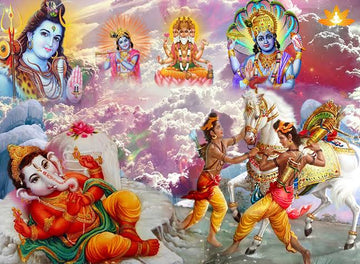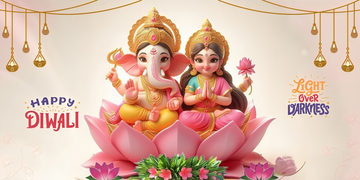
Hinduism is the world's oldest religion, with roots in prehistoric times between 5000 and 10,000 BC. It follows that many stories, beliefs, Indian mythology facts and mythologies related to religion are equally old. Given this history, it's possible that many of these legends have been retold numerous times over the years.
Hindu mythology has a long history, Indian mythology characters, mysterious characters, powerful tales, and a surprisingly ingrained connection to contemporary science. There are also cycles of time that, after a certain interval, repeat themselves. Additionally, there are epics like the Mahabharata and the Ramayana, with the former being the most well-known.
Hindu mythology offers a variety of interpretations of how the cosmos was created. Since there have been several methodologies at various times, the answers themselves range in complexity. The idea that the highest deities were unaware of their own existence before time existed is perhaps the one that is most widely accepted. There was no time, no heaven, no earth, or any space before creation. There was nothing but the black ocean crashing against the empty shoreline.
Hinduism has a history of polytheism. Hindus worship a variety of deities, Hindu gods and these deities and goddesses typically fall under one particular pantheon. In fact, many people estimate that there are almost 330 million gods in Hindu mythology, citing specific passages in the holy Hindu texts. Each of these deities represents a particular quality of life. For instance, the god Brahma is the architect of reality as we know it, while the goddess Saraswati is the fount of all knowledge and understanding. In fact, Hindu mythology as a whole is thought to be founded on the divine trinity of Brahma, Vishnu, and Shiva.
According to Hindu mythology, the Maha Yuga, a perpetual cycle of creation and destruction, is experienced by all living things. Over the course of four different epochs or Yugas, this cycle repeats again. The Satya Yuga, which lasts for 1,728,000 years, is the first of these ages. According to legend, the Satya Yuga was the period of truth and enlightenment. People in this era acquired an ideal state of mind, and their behaviors were always morally upright and well-reasoned. The sacred books also mention a surplus exchange of ideas and concepts among mankind. The Kali Yuga is the final age of the Maha Yuga's perpetual cycle. In terms of human years, it is also the shortest, lasting only 432,000. The current era, which belongs to the Kali Yuga, is also known as the Iron Age. More than any other time, the Kali Yuga is a time of instability and duplicity. The temptations of sin severely destroy human nature, leaving just a small amount of conscience. The lifetime of a man will likewise be expected to be no longer than 20 years when the Kali Yuga reaches its last stages. Man's extraordinary desire for materialism has brought this age to light. Following Treta Yuga, the third age is represented by Dwapar Yuga. Also known as the Bronze Age, the Dwapar Yuga is said to have lasted for 864,000 human years. It represents an age where goodness and evil in human nature are neck and neck. As the human body loses satva or purity, people attain far greater control over their bodies than their intellect. By the time Dwapar Yuga was at its peak, a man had already lost control over his innermost body and knowledge. He became more attracted to the materialistic aspects of the world, succumbing to his ever-increasing desires. Only intellectuals like Bhisma, Dharmaraja, and Vidura were able to escape this fate The Hindu scripts state that Treta Yuga spans a period of 1,296,000 human years. By the advent of Treta Yuga, the presence of sattva, or goodness in human nature had slowly started to diminish.
Between 1500 and 1000 BC, a group of hymns and religious writings known as the Vedas was created. These revered verses were composed in the Indus Valley, where Hinduism is thought to have its roots. Sanskrit is the language of Vedic literature. The Vedas were written thousands of years ago, yet there is a clear link between their messages and contemporary science, according to scientists. For instance, string theory has advanced the notion that there may be numerous worlds. It asserts that there are numerous parallel universes in the multiverse in which we inhabit. The Hindu Vedas explicitly reference the existence of cyclical infinite universes in traditional Hindu cosmology, echoing this "modern" idea. The Bhagavad Gita and the Vedas, two sacred writings, had the most complete comprehension of the cosmos. In instance, Albert Einstein famously remarked: "Everything appears redundant to me when I read the Bhagavad Gita and consider how God created this cosmos."
These Hindu mythology are very important to teach to our children in today's world but in their own way. So, the question is how?
Pandas's Box is here with the answer to this question. They offer Indian mythology dieties plush toys which will help children learn about their Indian mythological history and religious values at the same time.
Related Articles





